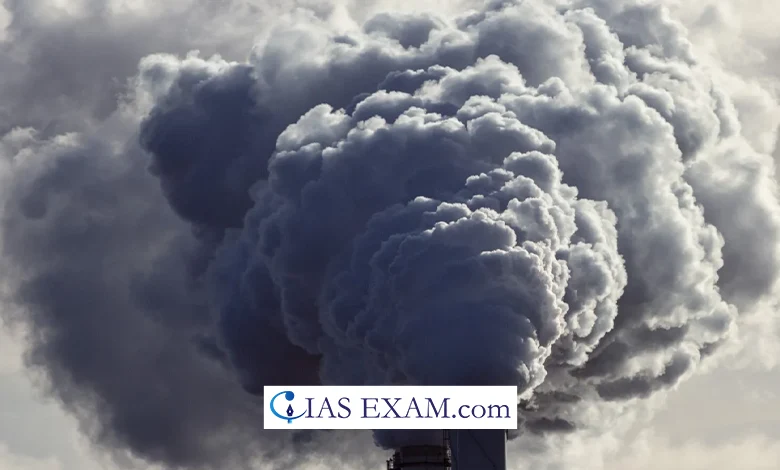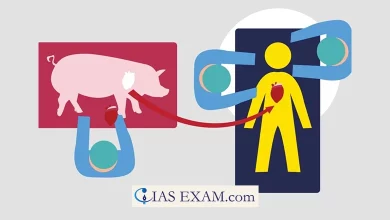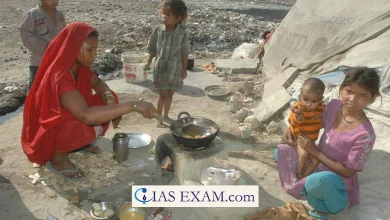Daily Current Affairs for UPSC
G7 countries to end use of coal power by 2035
Syllabus- Environment [GS Paper-3]

Context
Energy and climate ministers from the G7 group of industrialized nations have recently agreed to phase out by 2035 the use of coal power where the emissions have not been captured.
Key Highlights
- The non-governmental organisation had called for the G7 to set an earlier 2030 phaseout date for energy technology by means of coal, and a 2035 closing date for gas-fired components.
- Together the G7 makes up around 38 percent of the global financial system and will become liable for 21 percent of overall greenhouse gas emissions in 2021.
Coal Sector in India
- Coal Reserves: India has big coal reserves, and it is one of the global’s biggest coal manufacturers.
- The most important coal fields in India are located in the jap states of Jharkhand, Odisha, and West Bengal, in addition to in central states like Chhattisgarh and Madhya Pradesh.
- Coal Production: India is a few of the top 3 leading coal producers globally. The Coal India Limited (CIL) is the state-owned coal mining company and the largest government-owned-coal-manufacturer in the country.
- Coal Consumption: The electricity demand in India is surging. In 2022, the requirement grew about 8 – 9%.
- Industrial and commercial interests are among the largest clients of energy inside the country.
- Import and Export: Despite being a large coal producer, India has also been importing coal to fulfill the developing call for.
- This is due to issues which include transportation challenges and the need for specific varieties of coal for positive industries.
Concerns in phasing Out of Coal Power Plants
- Currently, out of the whole strength produced in the country, only 22% is from renewable sources. Fossil fuels, mainly coal, nonetheless offer 75% of India’s power supply.
- Dependency on Natural Factors: Energy sources like solar and wind are variable as they depend upon natural elements like daylight, wind and water availability.
- To ensure a constant supply, India has to heavily put money into battery storage.
- Concerns in Hydropower Projects: Numerous hydropower tasks are under construction or in the planning ranges in the Himalayan region.
- But they’ve come under fire as the tasks have induced ecological harm and raised concerns about capacity conflicts over water assets in the area.
- Nuclear Energy: The country’s plans to generate power by nuclear power plants have not genuinely taken off.
- During 2021-22, the flowers produced about 3.15% of the full strength generated in India.
- Infrastructure Development: The transition to renewable electricity calls for huge infrastructure improvement.
- The speed and scale of this infrastructure development may be a undertaking for a rustic as big and numerous as India.
- Grid Integration: Integrating renewable energy into the present energy grid is a complex undertaking.
Steps Taken by way of Government for Transition to Renewable Energy Sources
- India aims to attain 500 GW of renewable power capacity with the aid of 2030, about three instances the cutting-edge capability of about 180 GW.
- National Solar Mission (NSM): It was launched in 2010, it has set ambitious targets for solar potential set up, consisting of grid-related and rancid-grid solar energy.
- Green Energy Corridors: The Green Energy Corridor challenge specializes in improving the transmission infrastructure to facilitate the combination of renewable energy into the national grid.
- Renewable Purchase Obligation (RPO): This requires electricity distribution organizations and huge power clients you bought a certain percentage in their energy from renewable resources, encouraging the demand for renewable electricity.
- Pradhan Mantri Kisan Urja Suraksha evam Utthaan Mahabhiyan (PM-KUSUM): It consists of the set up of solar pumps, solarization of present grid-connected agricultural pumps, and the established order of solar energy plants on barren or fallow land.
- International Solar Alliance (ISA): India played a key role in establishing the International Solar Alliance, a coalition of sun-useful resource-wealthy countries to cope with their electricity needs by the advertising of solar energy.
Conclusion
- The agreement marks a big step within the route indicated last year through the COP28 United Nations weather summit for a transition far from fossil fuels, of which coal is the most polluting.
- It accelerates the shift of investments from coal to sustainable technology in particular in Japan and extra widely in the entire Asian coal economic system, including China and India.
Source: The ToI
UPSC Mains Practice Question
Q.“Access to affordable, reliable, sustainable and modern energy is the sine qua non to achieve Sustainable Development Goals (SDGs)”.Comment on the progress made in India in this regard. (2018)





.png)



